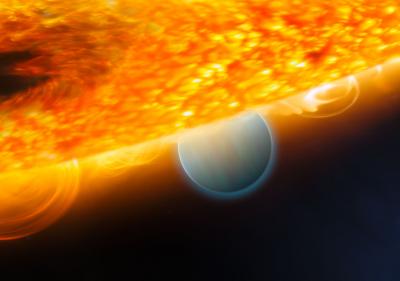Carbon Dioxide Discovered on an Extrasolar Planet

It’s amazing how every day we find more and more obvious clues that there may be other signs of life in he universe. This latest discovery shows that astronomers have detected carbon dioxide (a basic requirement for plants to perform photosynthesis) on a Jupiter sized planet. What’s great about this is that someday this technique may used to hunt for hints of life on an Earth like planet:
Hubble finds carbon dioxide on an extrasolar planet
“The Jupiter-sized planet, called HD 189733b, is too hot for life. But new Hubble observations are a proof-of-concept demonstration that the basic chemistry for life can be measured on planets orbiting other stars. Organic compounds can also be a by-product of life processes and their detection on an Earth-like planet may someday provide the first evidence of life beyond Earth. Previous observations of HD 189733b by Hubble and the Spitzer Space Telescope found water vapour. Earlier this year Hubble found methane in the planet’s atmosphere.”














